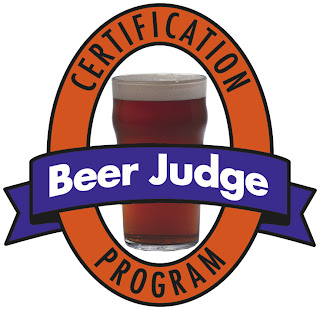I've been slowly cycling through the many beer styles in the style guidelines and every once in a while I like to look back and take stock of what's been brewed and make decisions about what's to come. Here's a breakdown of all 134 beers I've made in the past decade:
| STYLE | TIMES BREWED | ||||||
| 2B | Bohemian Pilsener | 1 | |||||
| 3A | Vienna Lager | 1 | |||||
| 3B | Oktoberfest/Marzen | 1 | |||||
| 4B | Munich Dunkel | 1 | |||||
| 4C | Schwarzbier (Black Beer) | 1 | |||||
| 5B | Traditional Bock | 1 | |||||
| 6D | American Wheat or Rye Beer | 1 | |||||
| 7A | California Common Beer | 1 | |||||
| 8A | Standard/Ordinary Bitter | 1 | |||||
| 8B | Special/Best/Premium Bitter | 2 | |||||
| 8C | Extra Special/Strong Bitter (English Pale Ale) | 1 | |||||
| 9D | Irish Red Ale | 1 | |||||
| 10A | American Pale Ale | 10 | |||||
| 10B | American Amber Ale | 8 | |||||
| 10C | American Brown Ale | 7 | |||||
| 11A | Mild | 3 | |||||
| 11C | Northern English Brown Ale | 1 | |||||
| 12A | Brown Porter | 2 | |||||
| 12B | Robust Porter | 9 | |||||
| 12C | Baltic Porter | 2 | |||||
| 13B | Sweet Stout | 1 | |||||
| 13C | Oatmeal Stout | 3 | |||||
| 13E | American Stout | 2 | |||||
| 13F | Russian Imperial Stout | 3 | |||||
| 14A | English IPA | 1 | |||||
| 14B | American IPA | 18 | |||||
| 14C | Imperial IPA | 7 | |||||
| 16A | Witbier | 3 | |||||
| 16B | Belgian Pale Ale | 3 | |||||
| 16C | Saison | 6 | |||||
| 16D | Biere de Garde | 2 | |||||
| 16E | Belgian Specialty Ale | 5 | |||||
| 17B | Flanders Red Ale | 4 | |||||
| 17D | Straight Lambic | 1 | |||||
| 17E | Gueze | 2 | |||||
| 18B | Belgian Dubbel | 1 | |||||
| 19C | American Barleywine | 2 | |||||
| 21A | Spice, Herb or Vegetable Beer | 1 | |||||
| 23 | Specialty Beer | 6 | |||||
| 24A | Dry Mead | 1 | |||||
| 24C | Sweet Mead | 1 | |||||
| 25B | Pyment | 2 | |||||
| 26B | Braggot | 1 | |||||
| 28D | Other Specialty Cider or Perry | 2 | |||||
It's easy to see that my focus has been on American beers, especially IPAs and Pales. There are also plenty of beers and styles I haven't even started to explore. Likewise, I should mention that I've included Dregs beers that I've made (10 so far) which are either approximations of styles or complete anomalies depending on what base beer and yeast are combined together. Some of my favorite homebrews have been lagers, which is interesting because I rarely seek out commercial examples. Maybe it's all of the time and effort it takes to make them come out right. I realize that I need to make more beers with fruit and spend more time working on mead and braggot recipes-drinks that I really enjoy.
For the last weeks of 2013, I plan to make a blackberry cyser, a lambic (number 2 in a series meant for a gueuze), a hibiscus metheglin and a barleywine (recipe to come).













